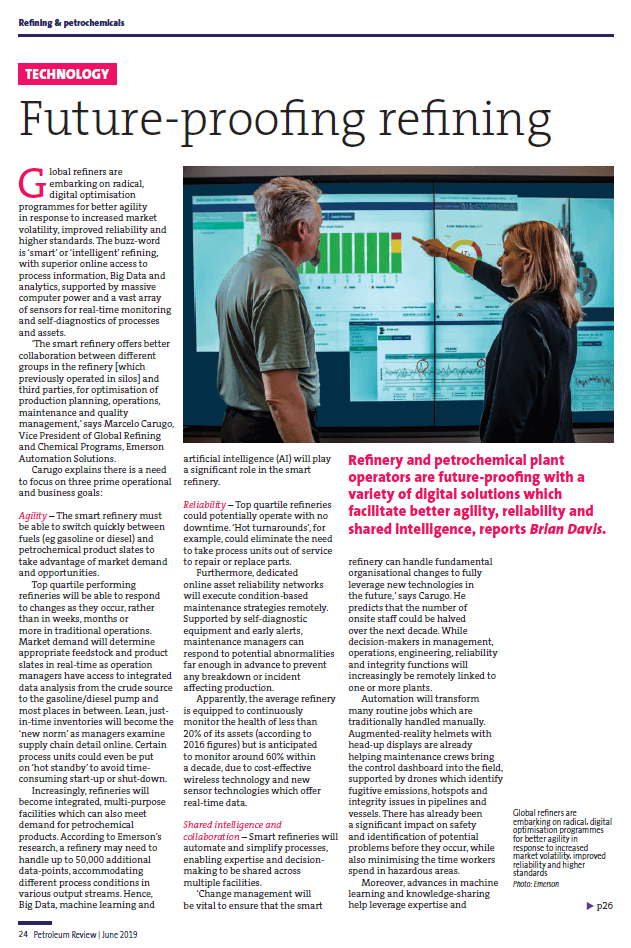 Production agility is an increasing objective among refiners and petrochemical producers. Changing characteristics of feedstocks and demand for produced products is forcing these companies to look for solutions to increase operational flexibility.
Production agility is an increasing objective among refiners and petrochemical producers. Changing characteristics of feedstocks and demand for produced products is forcing these companies to look for solutions to increase operational flexibility.
In a Petroleum Review article, Future-proofing refining (membership required for access), Emerson’s Marcelo Carugo shares his insights on how transformative digital technologies improve agility and overall business performance.
In the article’s opening, Marcelo is quoted:
The smart refinery offers better collaboration between different groups in the refinery [which previously operated in silos] and third parties, for optimisation of production planning, operations, maintenance and quality management…
He describes three operational and business goals commonly shared by refiners and petrochemical producers—agility, reliability, and shared intelligence and collaboration.
Agility is defined in terms of switching production mixes between produced fuels to respond to market demands and opportunities. Marcelo explains:
Market demand will determine appropriate feedstock and product slates in real-time as operation managers have access to integrated data analysis from the crude source to the gasoline/diesel pump and most places in between. Lean, just-in-time inventories will become the ‘new norm’ as managers examine supply chain detail online.
From a reliability standpoint:
…dedicated online asset reliability networks will execute condition-based maintenance strategies remotely. Supported by self-diagnostic equipment and early alerts, maintenance managers can respond to potential abnormalities far enough in advance to prevent any breakdown or incident affecting production.
And, from a collaboration viewpoint:
Smart refineries will automate and simplify processes, enabling expertise and decision-making to be shared across multiple facilities.
The article reveals some Emerson-sponsored research highlighting operational agility as top three business objective for national, integrated and independent refiners. Improving asset reliability was another key objective. And finally, senior executives with these organizations expressed the need for increased shared intelligence and collaboration to improve performance.
The article shares examples of improved collaboration using online dashboards such as Plantweb Insight and Plantweb Advisor, as well as Digital Twin simulation technology to train personnel and test various operating scenarios to optimize production.
Read the full article if you’re an Energy Institute member or visit the Refining section on Emerson.com for more on ways to move your digital transformation efforts forward to optimize production and boost profitability while keeping your people safe.
You can also connect and interact with other downstream hydrocarbon industry experts in the Refining group in the Emerson Exchange 365 community.





